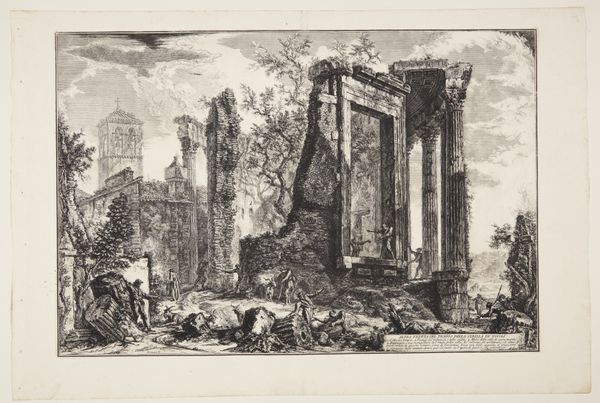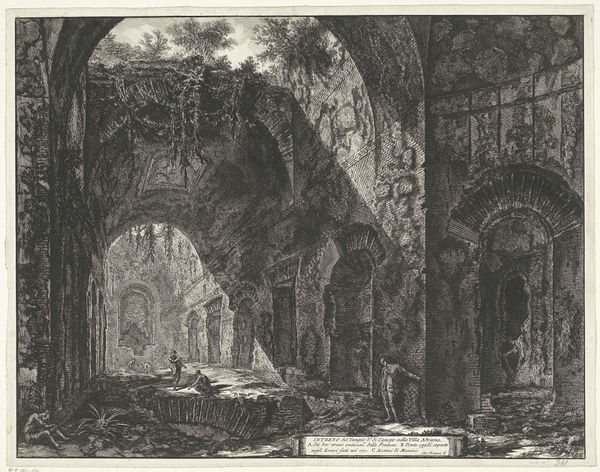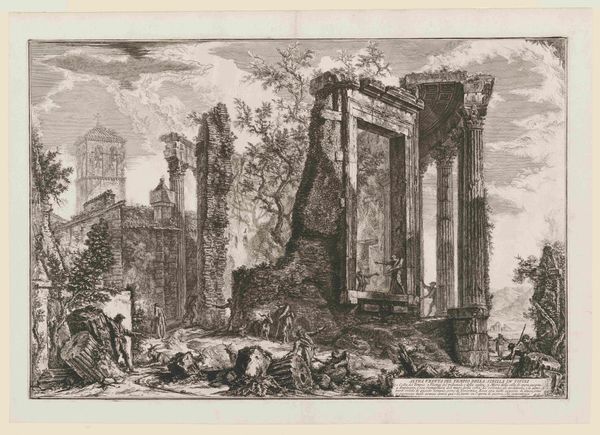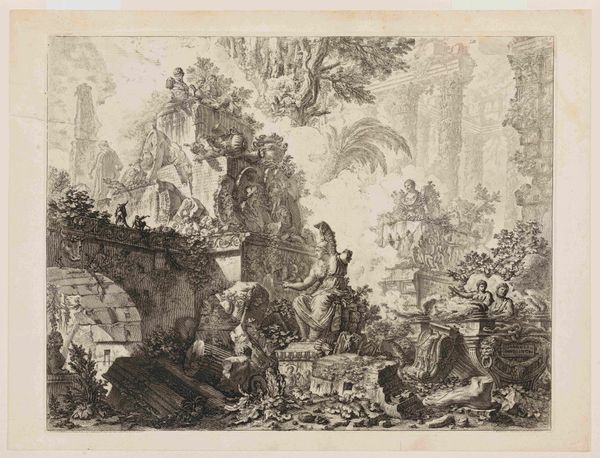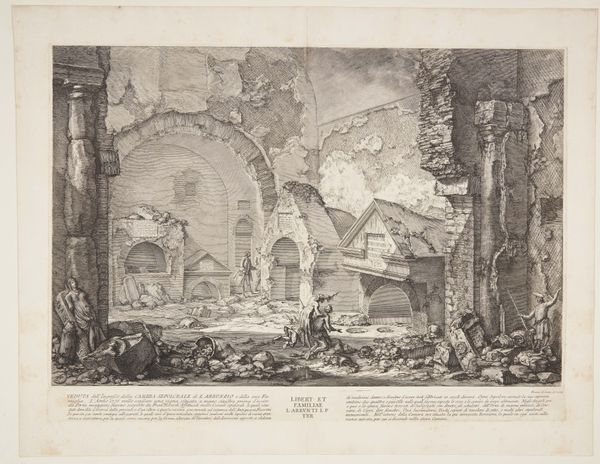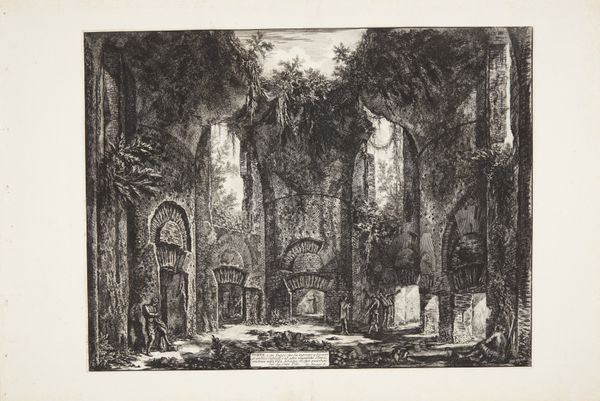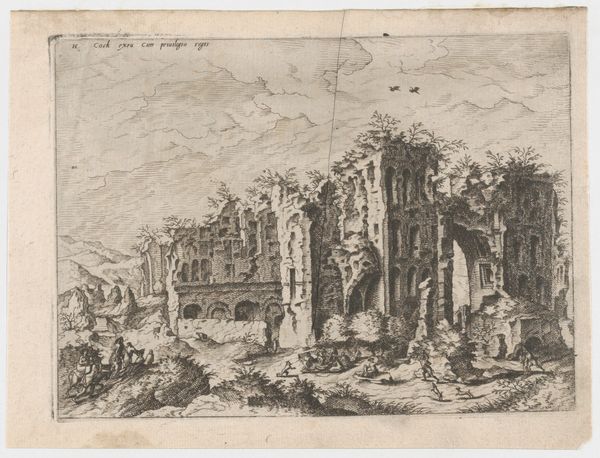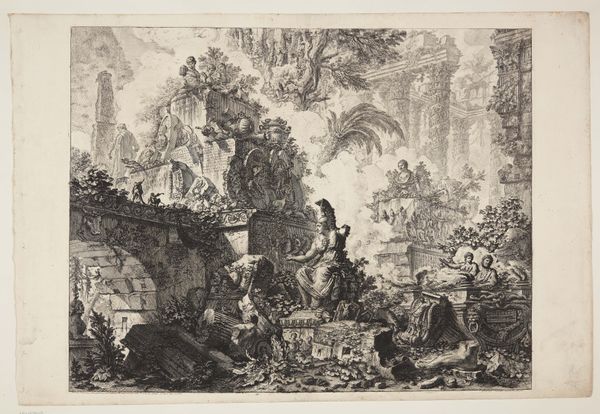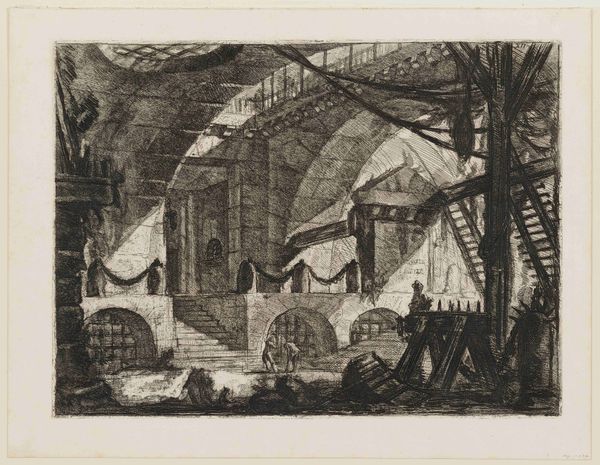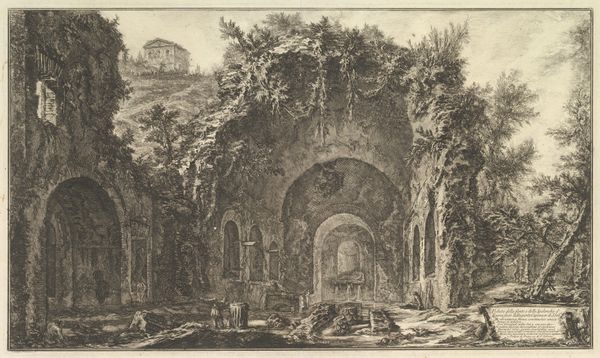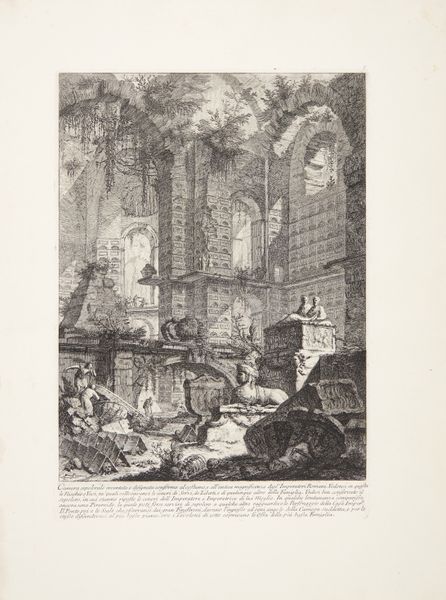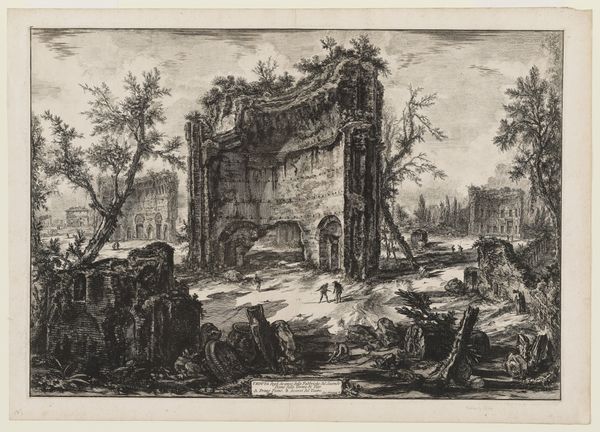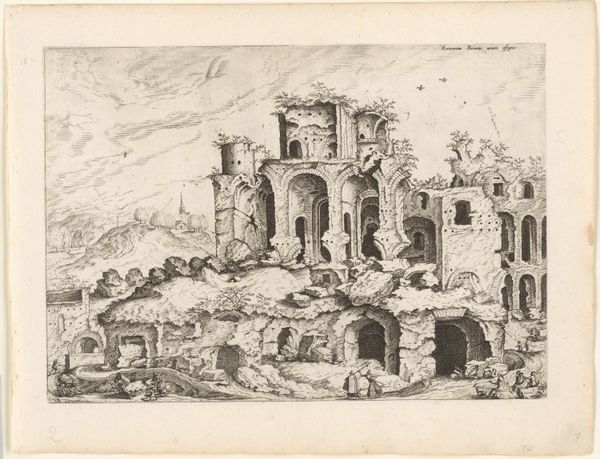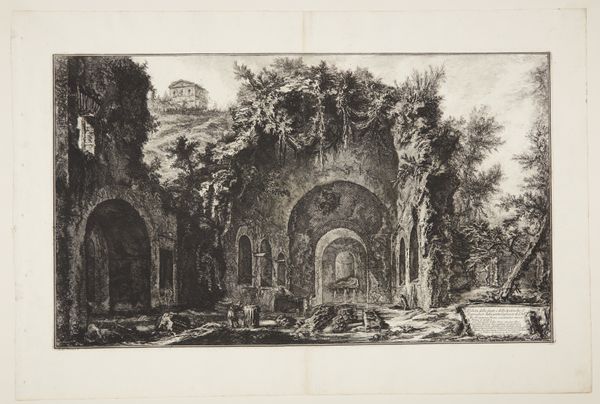
Remains of the so-called Canopus at Hadrian's Villa, Tivoli 1768
0:00
0:00
print, engraving, architecture
# print
#
landscape
#
romanesque
#
history-painting
#
engraving
#
architecture
Dimensions: 455 mm (height) x 585 mm (width) (plademaal)
Giovanni Battista Piranesi made this etching of the Remains of the so-called Canopus at Hadrian's Villa in Tivoli, Italy, sometime in the mid-18th century. The print depicts the ruins of a once-grand structure, overgrown with vegetation and weathered by time. The image invites us to reflect on the passage of time and the transience of human achievement. Piranesi was known for his detailed and dramatic depictions of Roman antiquities. His prints catered to the growing interest in classical history and architecture during the Enlightenment. This interest was particularly acute among wealthy Europeans undertaking Grand Tours. Piranesi’s work helped to shape the perception of ancient Rome and the way its ruins were understood. The ruins in this print are less a faithful record than a romantic vision. As a historian, I am interested in how Piranesi used visual codes, historical associations, and cultural references to create meaning. His prints are a testament to the power of art to shape our understanding of the past. They also invite us to think about how institutions like museums and academies can shape the production and reception of art.
Comments
No comments
Be the first to comment and join the conversation on the ultimate creative platform.
